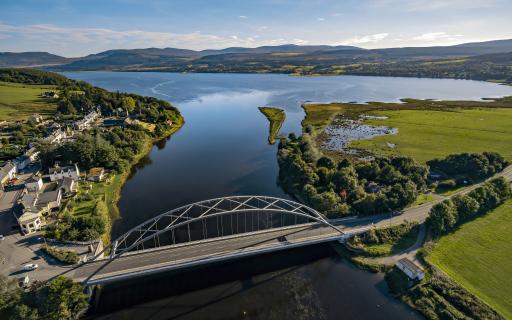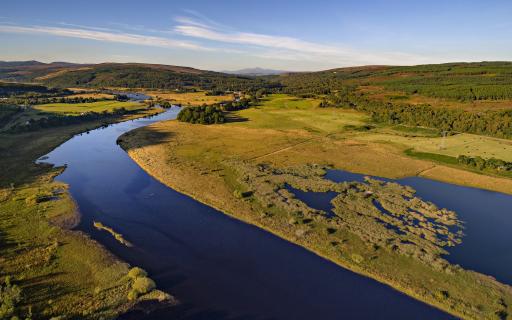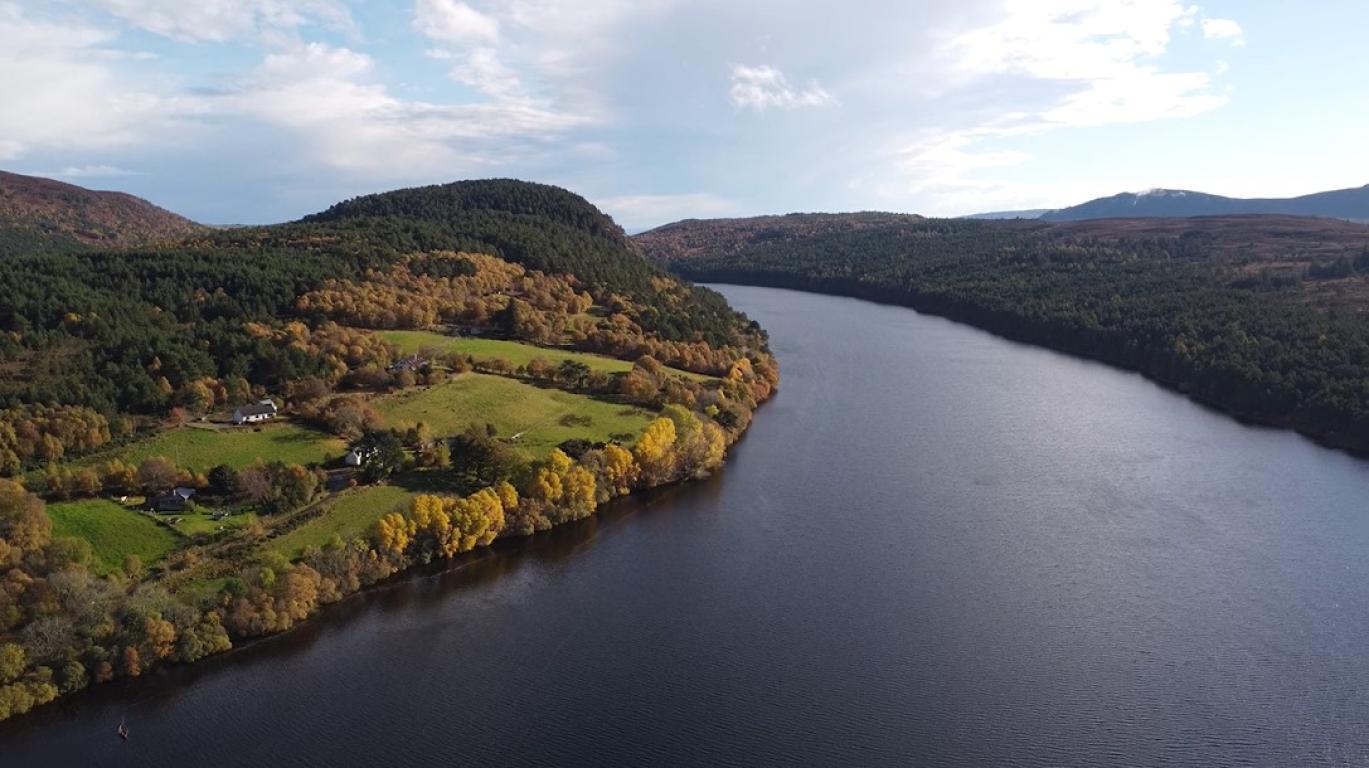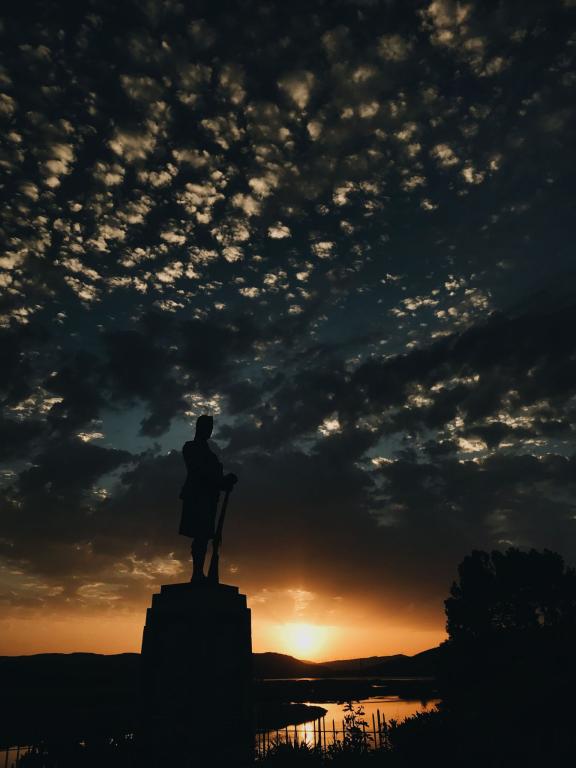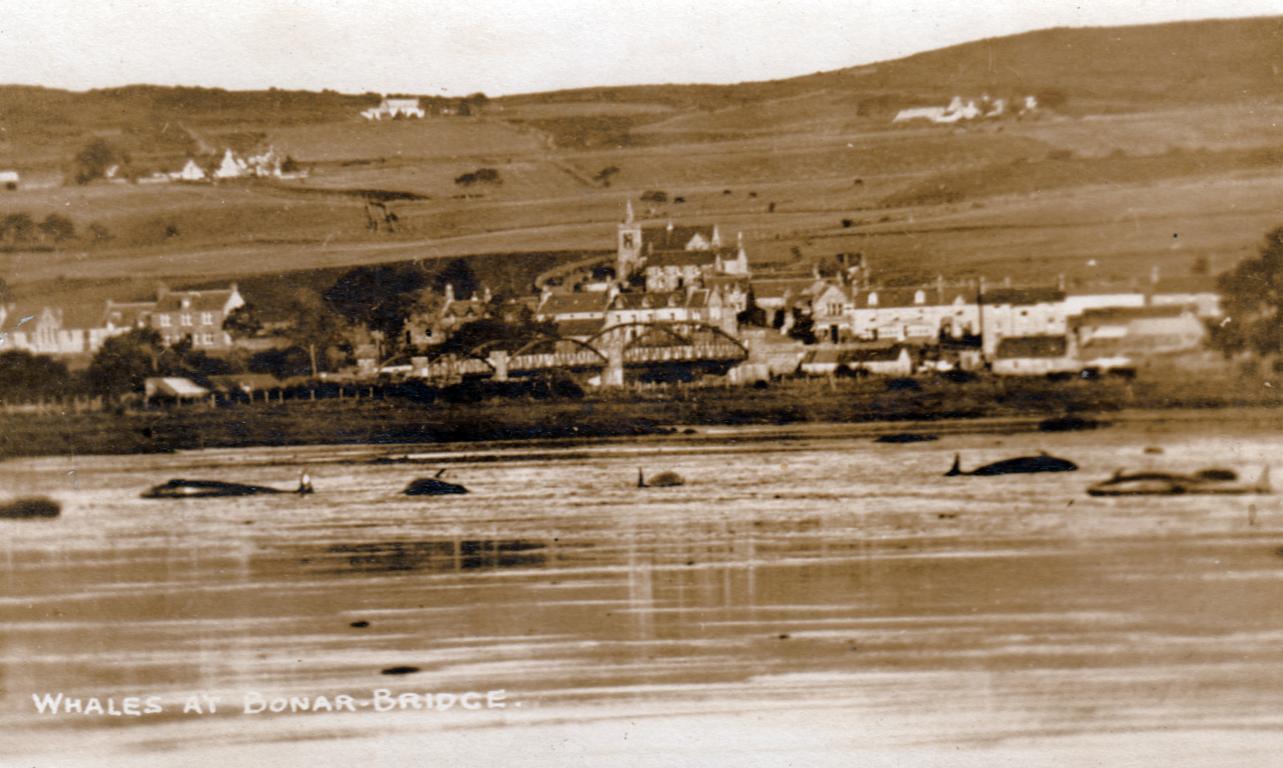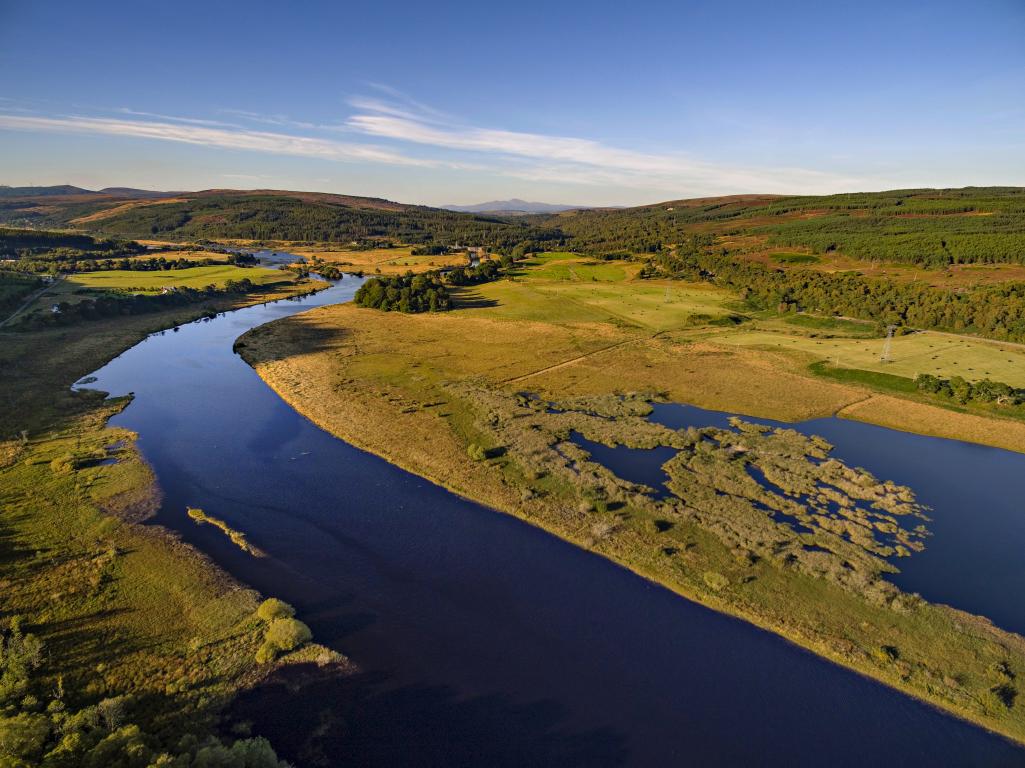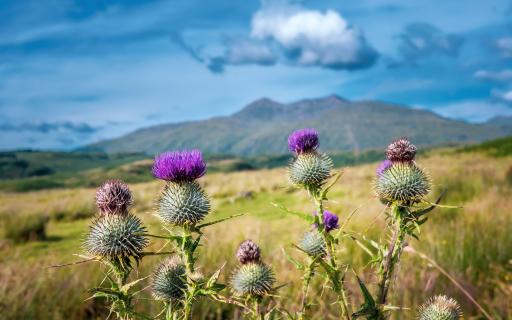For those that like adventuring in the great outdoors, Bonar Bridge and nearby Loch Migdale have plenty to offer. From walking circuits, to canoeing and paddleboarding on the Loch, bike rides and wildlife spotting, take the time to explore the area and discover ancient history nestled in this beautiful Highland landscape.
Bonar was the main fording point across the Kyle of Sutherland until 1812 when the first bridge was constructed and thereafter it was known as Bonar Bridge. The original bridge was destroyed in a flood in 1892 but rebuilt in 1893 and the current elegant bridge was opened in 1973.
A visit to the village will reveal a delightful array of local shops, cafés and restaurants surrounded by the stunning scenery of the Kyle of Sutherland. Keen travellers will find the village perfectly situated to reach all corners of Sutherland within a short distance.
From the Bronze Age to the Bridge Age
Bonar Bridge has extensive archaeological evidence for the Bronze Age including the Migdale Hoard, a priceless collection of jewellery, hair ornaments, bronze and carved jet items, which was found in 1900. There are also several Pictish symbol stones in the area and evidence of Norse activity in the 11th and 12th century.
Centuries later, during the Jacobite uprising of 1746, the Earl of Cromartie and his forces returning South were attacked by Clan Sutherland near Bonar Bridge, in what became known as the Battle of Bonar Bridge.
In the decades which followed the Jacobite disaster, much of the local land and population was cleared to make way for sheep farming in what became known as the Highland Clearances. Names of those forced to leave can still be seen etched into the glass of Croick Church, Ardgay, a poignant reminder of the turbulent past.
Nowadays, the area is known for its outstanding natural beauty and wildlife. Loch Migdale, Ardgay, is a freshwater loch ideal for paddleboarding, kayaking and canoing. It also contains a crannog, an artificial island connected to the mainland by a narrow causeway, dating from the Iron Age. There is also evidence for a small henge, cairn and hut circle which likely pre-date the crannog showing some occupation of the area from the Bronze Age.
The rivers Oykel, Cassley, Shin and Carron all feed into the Kyle of Sutherland above Bonar Bridge and are renowned salmon fishing rivers. Cassley has a set of beautiful falls and the Shin has an impressive set of falls that are well-known for salmon-jumping at the Falls of Shin.
If you prefer an adventure on dry land, the Migdale Pinewood, to the East of Bonar Bridge, is owned by the Woodland Trust and is a Site of Special Scientific Interest, which can be accessed via a hike through Ledmore and Migdale, around the small village of Spinningdale on the shore of the Dornoch Firth. Eagle-eyed wildlife spotters may be able to catch a glimpse of pine marten, red deer, wildcats, owls and many more species. There are more than 7.5 miles of paths and tracks to follow to take in the magnificent scenery and recharge your batteries in the great outdoors. Parking is available at Torroy car park with public toilets at Bonar Bridge and Dornoch.
Other areas of natural beauty and heritage such as Invershin, Spinningdale, Rosehall, and Lairg can be easily travelled to from a base in Bonar Bridge. Venture North’s Heritage Map is available to download as an app and handy pocket-guide to discover sites in and around Bonar Bridge on your next visit.
There are plenty of options for accommodation around Bonar Bridge from self-catering to hotels and B&B’s, luxury glamping and wild camping areas. Please be respectful of the landscape and follow the Scottish Outdoor Access Code. There are also plenty of opportunities to sample local produce in shops, cafés and restaurants.
Enjoy a breath of fresh air on your next visit!




